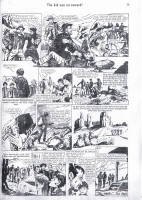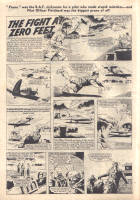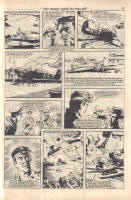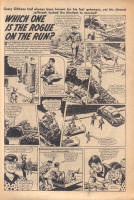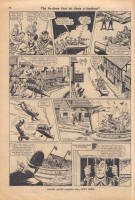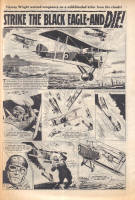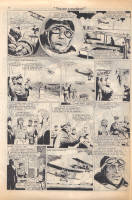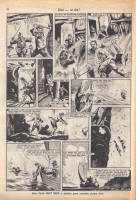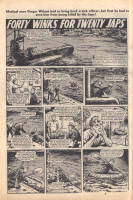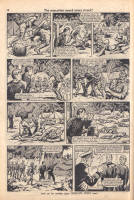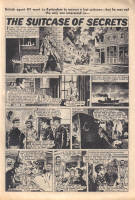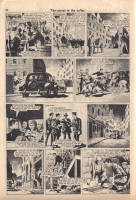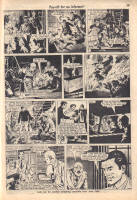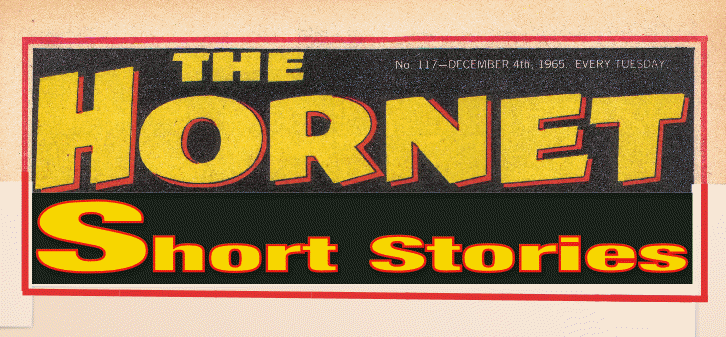
Writers:- The Hornet editorial team. Artists:- Carrion, Garcia, Sturrock and unknown artists.
Short stories are an important element in weekly and monthly comics. They help to fill a space when for example, a weekly strip ends before other longer weekly part strips have reached their conclusion. The short story is then used to "fill the gap", before several new stories all begin inconjunction with a promotional push for a comic. 2000AD Britain's premier weekly comic, makes use of this process, as no doubt do other weekly comics.
In the Hornet comics last few years of publication, there appeared to be more short stories published than there were series. I've no explanation for why this was.
The definition of a written story can be described as, 'an account of an incident, a distinct piece of action.' (Lomax, 1983). This holds true for short stories, but as they are shorter than a novel will only have one (probably) central theme running through it. The writer Somerset Maugham,
knew a thing or two about writing short stories says in his book Points of View, that a short story, 'deals with a single incident, material or spiritual, that can be read at a sitting; it is original, it must sparkle, excite or impress.' This definition also holds true for comic short stories.
Short stories in a comic essentially tell the same story, but what makes them interesting is how the story is told. In the Thomson comics it is usually the triumph of good over evil. Whether it is British or Commonwealth Armed forces defeating Axis units or tales of young boys outwitting the baddies, to the good sportsman winning in a sports event, after being hindered in some way by a cheating opponent.
The length of a short story in the Thomson comics was usually three pages, but could also be occasionally one, two or four pages. The stories still followed Thomson story guidelines that is, they were plot driven as opposed to character driven. (Although there wasn't time in a short story to develop the characters anyway).
The short stories I have chosen below include war, espionage and western adventures and are from issues 9, 137, 354, 54, 302, 306, 382, 385 of the Hornet. Further stories will be added at the Editor's whim!
Bibliography
Lomax, Roy Writing the Short Story.- London: Nationwide Studies, 1983.-
Maugham, Somerset Points of View.- London: Heinemann, 1958.-
 |
text © Adrian Banfield, 2012. artwork © D.C. Thomson Co. Ltd




